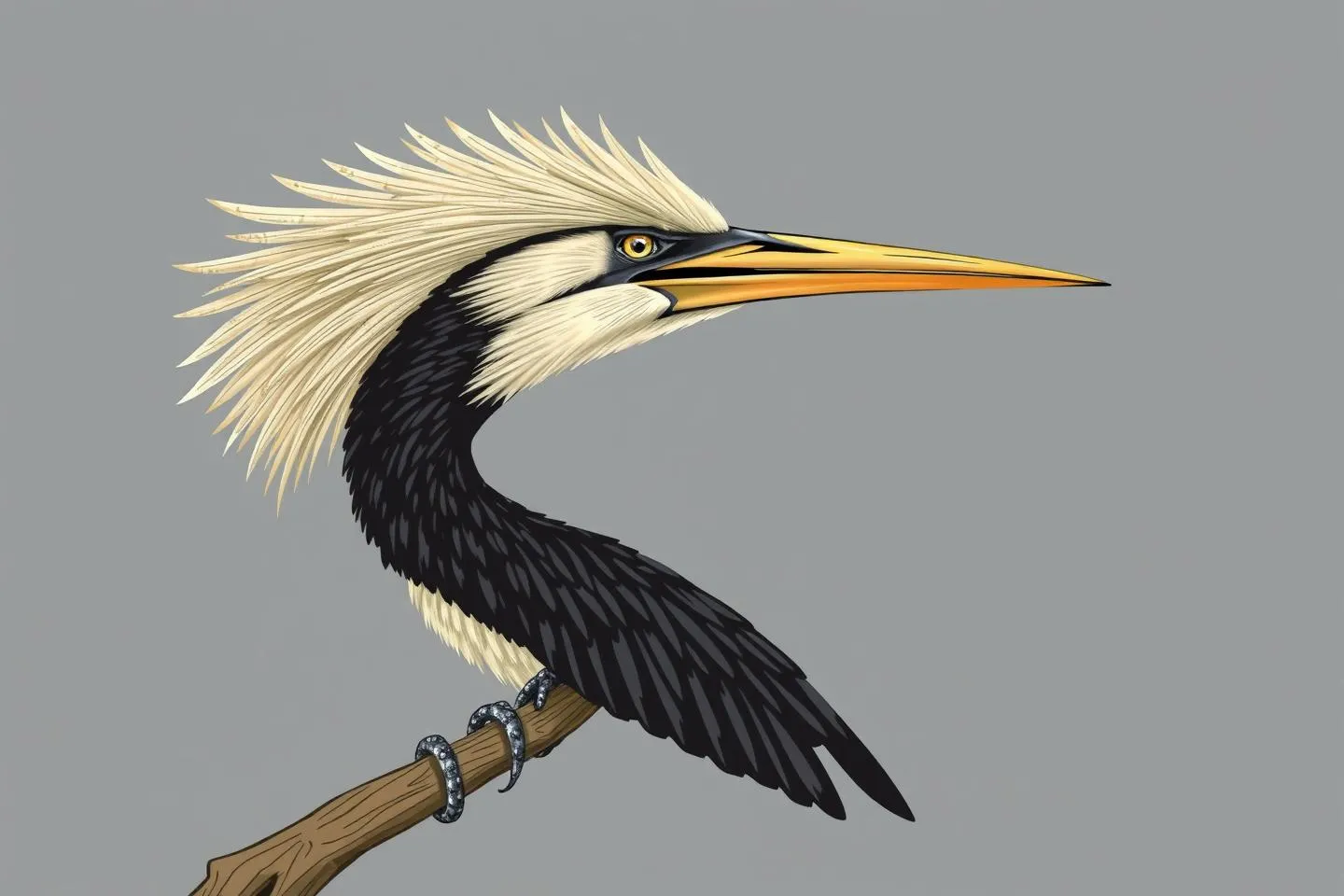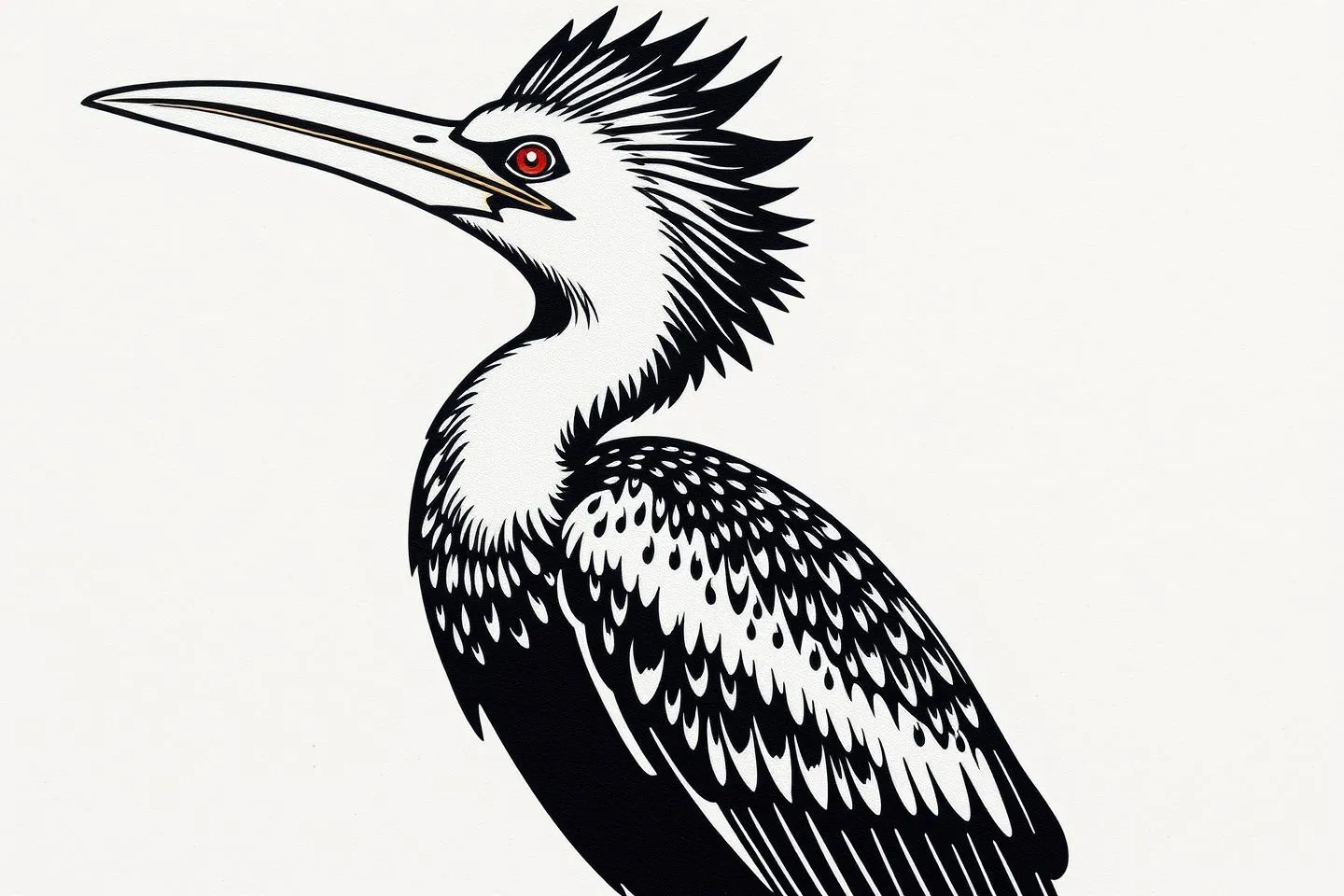Anhinga Symbolism: A Deep Dive into the Mysteries of the Snakebird

The Anhinga, often referred to as the “snakebird” due to its long, slender neck and serpentine appearance when swimming, is a fascinating creature that has captured the imagination of cultures across the globe. This enigmatic bird, with its striking silhouette and unique behaviors, carries a wealth of symbolism that spans ancient myths, spiritual teachings, and modern interpretations. In this exploration of Anhinga symbolism, we’ll uncover the origins, core meanings, and contemporary significance of this remarkable bird.
Origins & History: The Anhinga in Myth and Folklore
The Anhinga has long been a subject of intrigue in ancient myths and folklore. In many indigenous cultures of the Americas, the bird was seen as a messenger between worlds, often associated with water spirits and the mysteries of the unseen. Its ability to dive beneath the surface and reemerge with prey symbolized a connection to the spiritual realm and the cyclical nature of life and death.
In some South American traditions, the Anhinga was believed to be a guardian of sacred waters, embodying the balance between life-giving and life-taking forces. Its presence in wetlands and rivers made it a symbol of purity and renewal, as water itself is often linked to cleansing and transformation.
Over time, the Anhinga’s image evolved in art and literature. Early European explorers, upon encountering the bird, were struck by its unusual appearance and behaviors. They often depicted it in travel journals and naturalist sketches, contributing to its mystique. In modern times, the Anhinga has become a symbol of resilience and adaptability, particularly in the face of environmental challenges.
Core Symbolism: Traits and Behaviors of the Anhinga

The Anhinga is a bird rich in symbolic meaning, largely due to its unique characteristics and behaviors. One of its most notable traits is its patience. Often seen perched motionless for long periods, the Anhinga waits for the perfect moment to strike its prey. This behavior has made it a symbol of focus, determination, and strategic thinking.
Another key aspect of the Anhinga’s symbolism is its adaptability. Unlike many waterfowl, the Anhinga lacks waterproof feathers, which allows it to dive deeply and swim underwater with ease. However, this also means it must spend time drying its wings in the sun. This duality—being both a skilled swimmer and reliant on external elements—symbolizes the importance of balance and resourcefulness.
In various cultures, the Anhinga has been associated with transformation and rebirth. Its ability to move seamlessly between water and air represents the fluidity of life’s transitions. For many, the Anhinga serves as a reminder to embrace change and trust in the process of growth.
Modern Context: The Anhinga in Contemporary Culture
In today’s world, the Anhinga continues to inspire artists, writers, and environmentalists. Its striking appearance and behaviors make it a popular subject in wildlife photography and nature documentaries, where it is often portrayed as a symbol of the delicate balance within ecosystems.
In literature and storytelling, the Anhinga frequently appears as a metaphor for inner strength and perseverance. Its ability to thrive in diverse environments resonates with themes of overcoming adversity and finding one’s place in the world.
The Anhinga also plays a significant role in environmental narratives. As wetlands face increasing threats from climate change and human activity, the bird has become an emblem of conservation and ecological awareness. Its presence in these habitats underscores the importance of protecting natural spaces for future generations.
Spiritual Significance: The Anhinga as a Spiritual Guide
The Anhinga holds deep spiritual significance in many traditions. In some Native American beliefs, the bird is seen as a spiritual guide, offering wisdom and insight to those who seek it. Its connection to water, a universal symbol of emotion and intuition, makes it a powerful ally in meditative and introspective practices.
In shamanic traditions, the Anhinga is often associated with dreamwork and vision quests. Its ability to navigate both the physical and spiritual realms makes it a valuable totem for those exploring their subconscious or seeking clarity in their lives.
The Anhinga’s symbolism also extends to rituals of purification and renewal. In some cultures, invoking the spirit of the Anhinga is believed to cleanse negative energies and invite positive transformation. This aligns with the bird’s natural behaviors, which emphasize the importance of shedding old patterns and embracing new beginnings.
Related Themes: Symbols and Interpretations
The Anhinga is closely tied to several universal symbols, each adding depth to its overall meaning. Water, as a primary element in the Anhinga’s habitat, represents emotion, intuition, and the flow of life. The bird’s relationship with water highlights the importance of staying connected to one’s feelings and trusting the natural rhythms of existence.
Another key theme is transformation. The Anhinga’s ability to move between air and water mirrors the human journey of growth and self-discovery. It encourages us to embrace change and view challenges as opportunities for renewal.
In practical terms, the Anhinga’s symbolism can be applied to personal growth and daily life. Its traits of patience, adaptability, and resilience serve as valuable lessons for navigating life’s uncertainties. By embodying the spirit of the Anhinga, we can learn to approach challenges with grace and determination.
Conclusion: The Timeless Wisdom of the Anhinga
The Anhinga is more than just a bird; it is a symbol of profound wisdom and timeless truths. From its ancient roots in myth and folklore to its modern role in environmental advocacy, the Anhinga continues to inspire and guide us. Its teachings of patience, adaptability, and transformation remind us of the beauty and complexity of life’s journey.
Whether encountered in the wild, in art, or in the depths of a dream, the Anhinga invites us to dive beneath the surface and explore the mysteries within ourselves. By embracing its symbolism, we can cultivate a deeper connection to the natural world and the spiritual forces that shape our lives.
In the end, the Anhinga stands as a testament to the power of symbolism—a bridge between the seen and the unseen, the known and the unknown. Its presence in our lives, whether literal or metaphorical, offers a glimpse into the infinite possibilities of growth, renewal, and transformation.